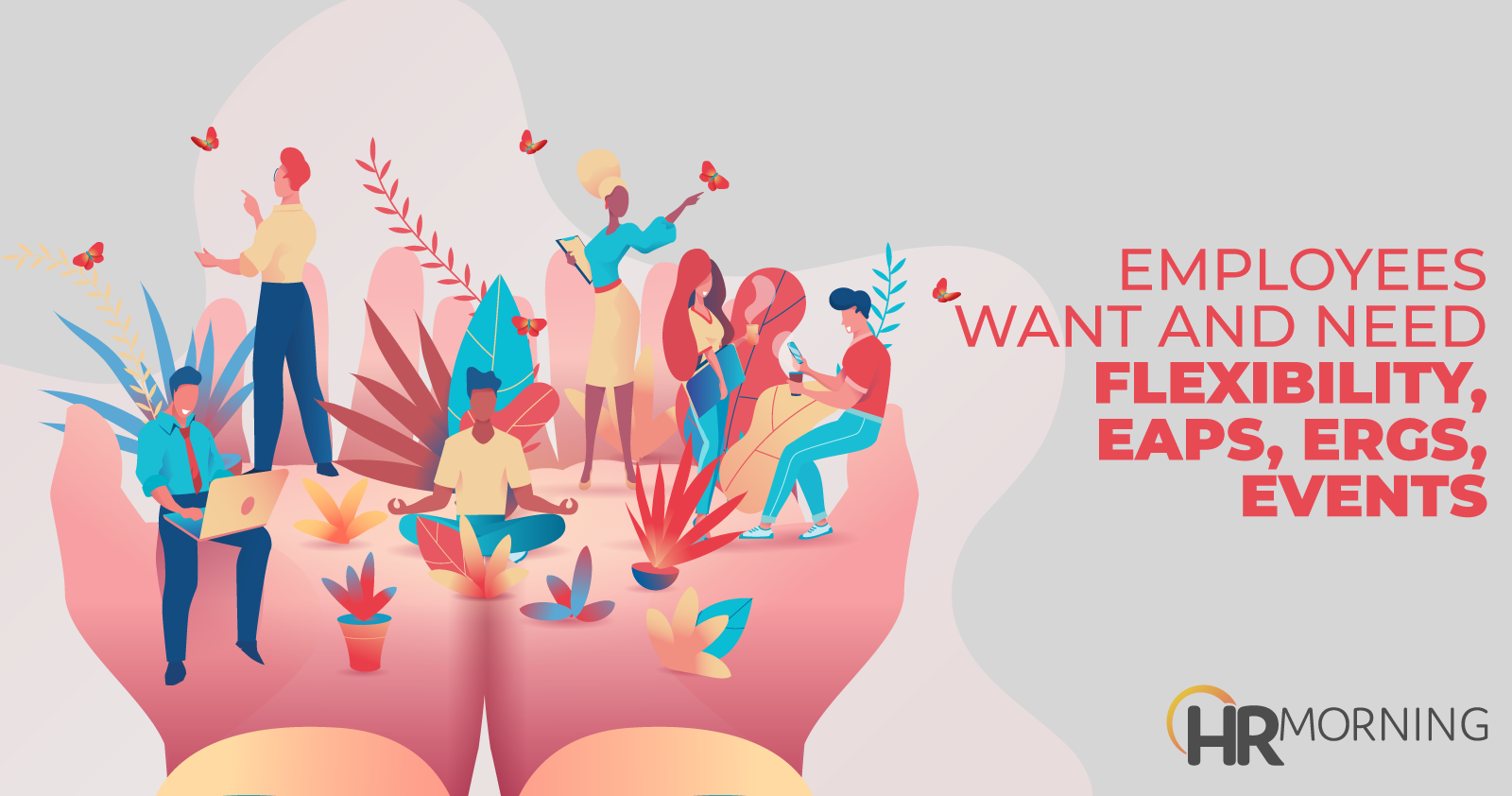The types of benefits people are getting excited about today are really changing. They look different than a few years ago. So, which of these benefits that have been implemented during the pandemic are instrumental with retention?
Flexibility
Flexibility is a popular benefit people want. One in three employees don’t want to work onsite full time. They’ve had a taste of working from home, and they don’t want to give it up. They’ve seen what it’s like to be more involved in their families lives, and they love it. Or they’ve had more time to devote to themselves, a charity, a hobby, a sport, whatever. The thing is, they want life to stay this way.
And for most companies, this is a viable option. Having employees work remotely full or part time has worked for the past year and a half. It’s also what people want.
Companies who want to stop the Great Resignation need to start listening more to their employees.
Employee assistance programs
Another important benefit nowadays: employee assistance programs (EAPs). Unfortunately, many employees aren’t aware of them, and therefore don’t use them. But when they do find out about them, they’re very popular, especially during the pandemic.
“I think one benefit that a lot of people don’t use as much as they might are EAPs. You dial an 800 number and you speak to a counselor. Or you’re referred to someone in the community you can talk to. It’s important to be able to talk/vent to someone when you’re stressed about your life, future, family, the pandemic. It doesn’t solve all of your problems, but it allows you to get things off your chest,” said Dr. Goetzel, senior scientist and director of the Institute for Health and Productivity Studies (IHPS) Johns Hopkins University Bloomberg School of Public Health.
In the Gympass Talks: Avoiding the Great Resignation – Talent Retention & Employee Wellness in partnership with Virgin Pulse, Dr. Goetzel said he’s seen more senior executives reveal to employees that they’ve struggled with depression or some other problem. Explaining what they did and how they dealt with it.
The reason this is happening? It helps remove the stigma that mental health has. “If you hear a senior executive talk about their depression and how they dealt with it, it helps people get over the hump/stigma,” he explained.
There are also a lot of apps out there that can help employees and are often a part of an EAP. “I have Calm on my phone and both my wife and I use it,” said Dr. Goetzel. “I will periodically do the 10-minute meditation, and my wife uses it at night to fall asleep. I love the sleep stories. These things are so very helpful and available, but people just might not be aware of them.”
Employee resource groups
Developing employee resource groups (ERGs) is a very important benefit to provide. The reason: People like to get together with other people and talk about their kids, home schooling, sports, hobbies, etc.
“They just like to get together,” said Dr. Goetzel. “And if they can do that without impacting their productivity or day-to-day life, even better. Having that kind of an affinity group, where you feel part of a family even if it’s a subpart of the entire organization, helps a lot, and the EAPs can help set that up.”
Events
Events engage people and are important to have. Dr. Goetzel recalled one organization that he worked with that held an annual dance competition. Their offices were all over the world. So, each office would prepare a dance routine, perform it on camera and then everyone would vote for the best dancers. “It was a lot of fun and got people, like the tech people who don’t typically do those kinds of things, engaged and involved in social activity.”


